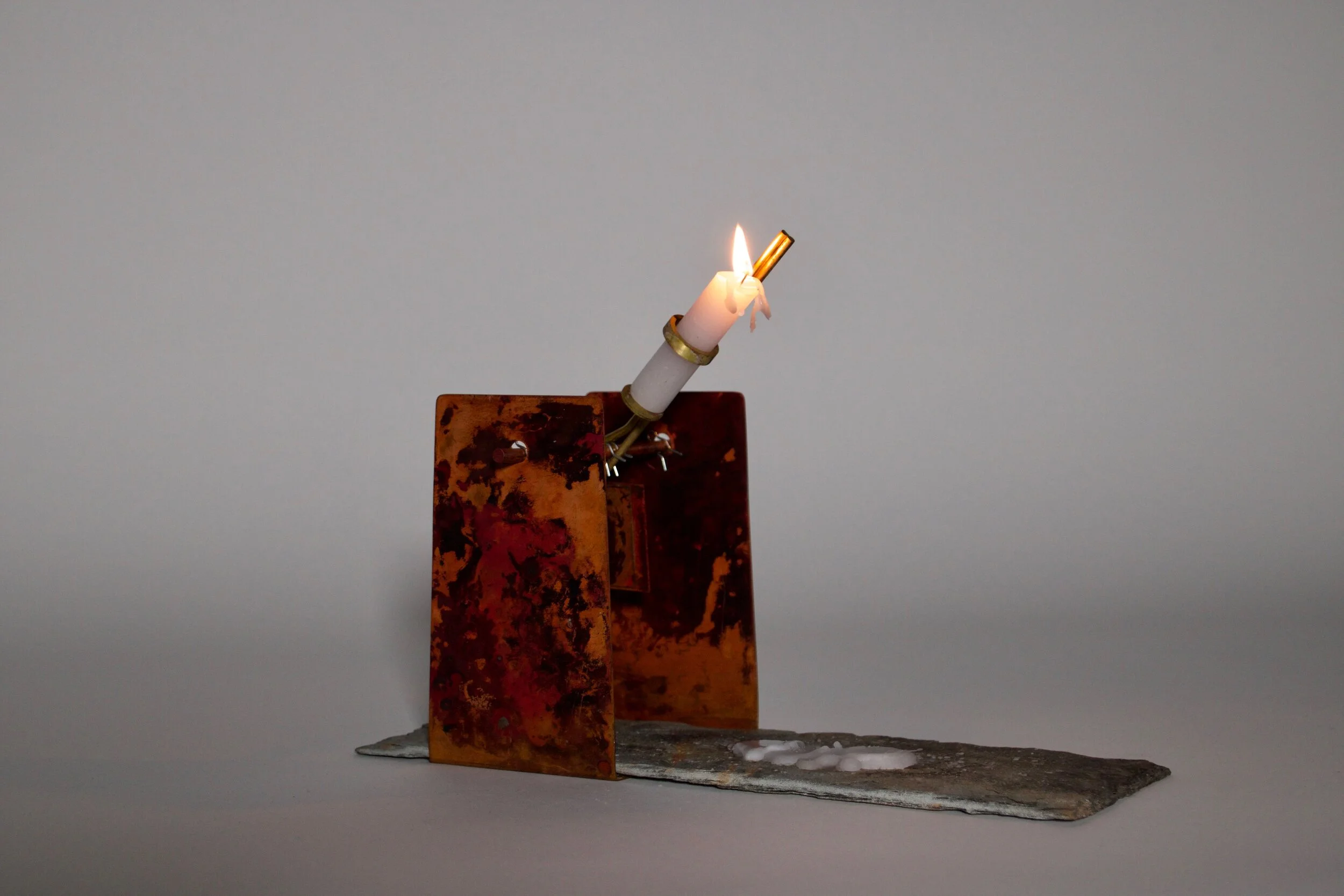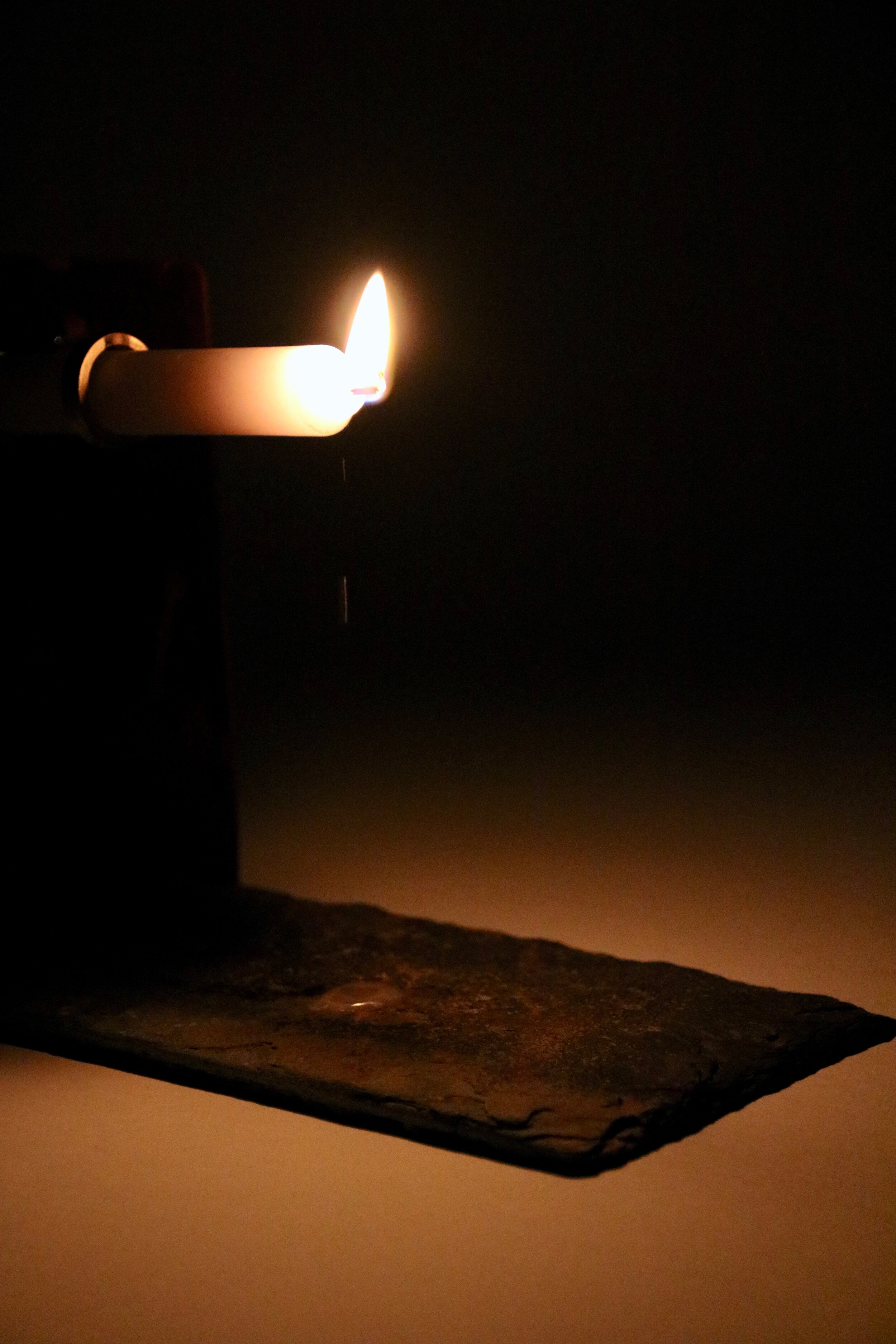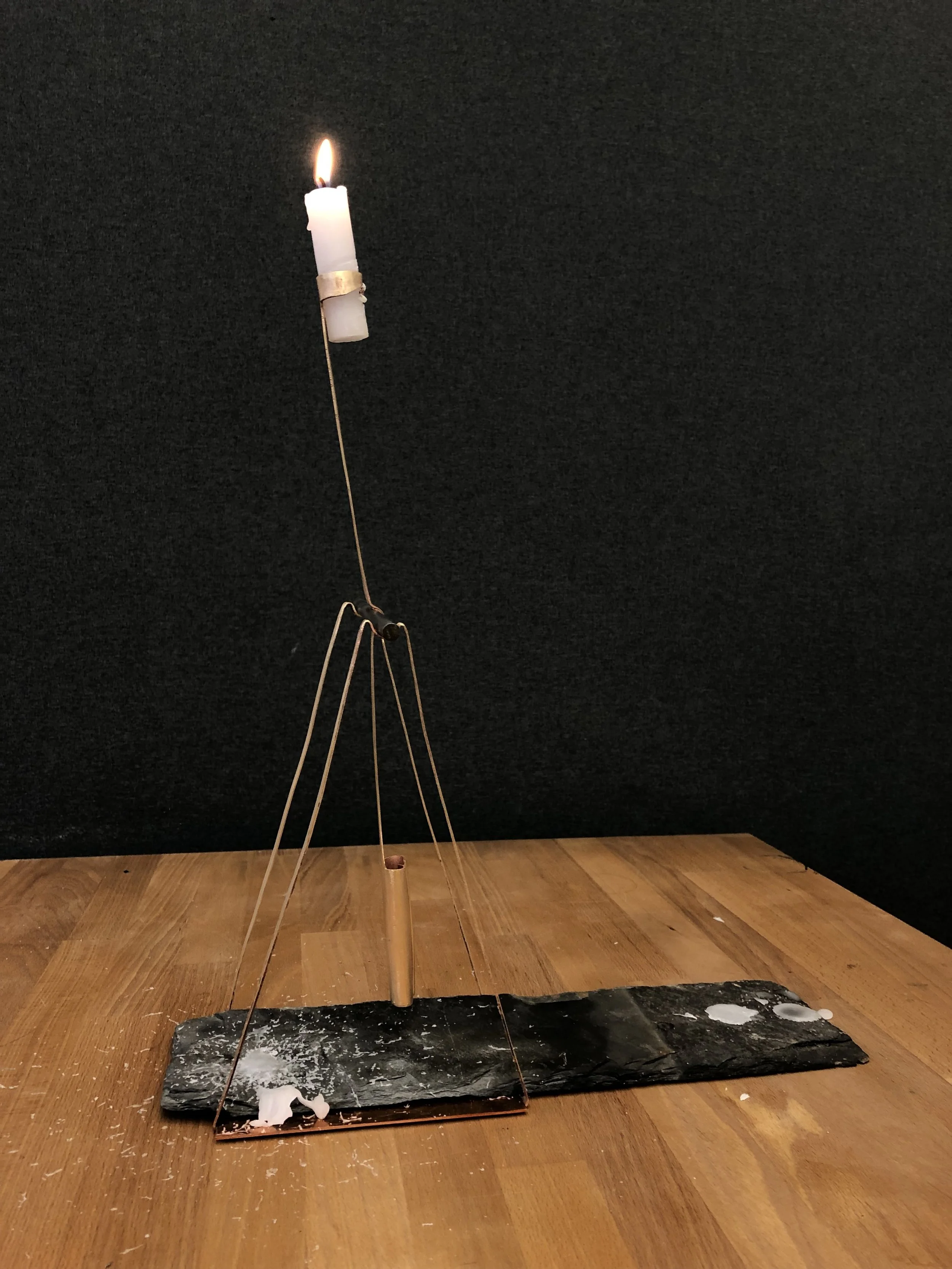Memorial Candle
What—
An artifact based off of the Jewish tradition of the yahrzeit candle— a candle lit on the anniversary of a loved one’s death in remembrance.
Why—
In Judaism, the flame is often used to represent the soul. The lighting of candles is deeply rooted tradition that spans across nearly all celebratory occasions as well as times of mourning. Traditionally, the yahrzeit candle is lit for 25 hours and is to extinguish itself.
This piece aims to express the concepts of earth and ascension through movement and material. As this candle melts, the weighted arm moves the flame upward.
How—
This piece uses a combination of found objects, repurposed hardware, and copper sheet metal. Each copper component was heated to achieve a fire-scale finish. The removable slate base was sandblasted to reveal the color variation between layers and soften its overall appearance.
Balance is once
again achieved
Experience—
While already a beautiful expression, my piece aims to elevate engagement. Often, these candles sit statically, burning until there’s nothing left. I wanted to shift the ritual to the foreground of the home environment, creating a more dynamic and interactive ceremony— a way to visualize the passing of time and the traces left behind.
The candle starts its journey close to the earth (rock). As time passes, traces of the flames’ path can be seen in the wax drips. The candle continues to elevate. When the flame finally reaches the peak of its upward rise, it brings with it a feeling of completion, though farther from the earth, balance is once again achieved.
Version 1—
Once I had decided to pursue using the metaphor of ascension, I needed to do a proof of concept. Overall I loved the effect, however, the one concern I had moving forward were the abrupt lifts if a larger chunk of wax fell. Eventually, this worked itself out, as the switch to a metal-on-metal pivot point with a wider hole (reducing friction by having less material contact) smoothed the lift.
Slate Base—
To replace the turquoise folder wax-catcher (pictured above), I bought surplus slate roofing (as well as other rock/tile options) from a local construction store. Only available in larger pieces, I used a wet saw the to cut it to the proper size.
Version 2—
A working prototype made using metal — however, aesthetically not at all where it had to be. Having never done such a large scale, motion based, metal project, I was woefully unprepared to create this iteration. My initial concept was to create a large, single-piece of metal, candle holding arm . While functional, the arm was a bit gangly and the base was wobbly and irregular. One of the most need-to-change aspects of version 2 was the hierarchy between the base form and the candle arm form— the base needed more strength and the arm needed to become a more practical length.
I knew I wanted to use metal, as materiality was key to this project, So I decided to edit my designs given my new found knowledge of metalworking and continue on to the next iteration.
Further Work—
While the experience within the object is becoming quite resolved, the experience around the object is my next point of focus. Thinking about contextually where this object exists, both physically and emotionally, will be key to the overall success of my concept.
Because of the traditions and history surrounding the yahrzeit candle, I plan to incorporate aspects of storage into the form. Knowing this piece may not remain on display year-round, I will shift the design of the arm supports so they will be able to double as a holding case for the separate object parts. Building into the design the idea of “the right occasion” to use the object will help to support the system the exists around the tradition. The opening of the box and assembly of pieces will also help the user to develop an intimate/personal relationship to the object.

























